The pyramids – perched on a sandy ridge – are a truly breathtaking sight, especially at sun set when the dunes and the pyramids takes on a spectacular reddish glow. What makes them so very special is the unknown of the attraction.
Traveling to the pyramid on public transport
The smooth road going to Atbara, Karima and further north to Egypt passes within 1km from the pyramids. As soon as they pyramids appeared in the distance all the passengers in the bus started pointing them out to us, assuming correctly this is where the two tourists wanted to go. Once the driver had dropped us off, Kelly and I stood on the side of the road wondering whether we should walk all the way to the pyramids.
We only carried small bags, but it was around noon, just sand between us and the pyramids and we only had a small bottle of water. Soon a local appeared with a camel offering to take us there, but he had only one camel! Somebody up at the tented camp must have watched the scene and soon a jeep appeared – lucky us.
The tented camp
The camp is made up of about 20 tents and a large wooden building where the meals are served. It is run by an Italian tour agency founded by an Italian lady who recognized the potential of tourism in Sudan and had the camp built in Meroe and the Nubian Guesthouse in Karima. Staying in the comfortable tents costs $100 a night including three meals, a ridiculous high price for Sudanese standards. But the place is busy with Italian and Spanish groups and we also treated ourselves for one night, no regrets. A once in a life-time experience, topped by an delicious Italian buffet in the evening.
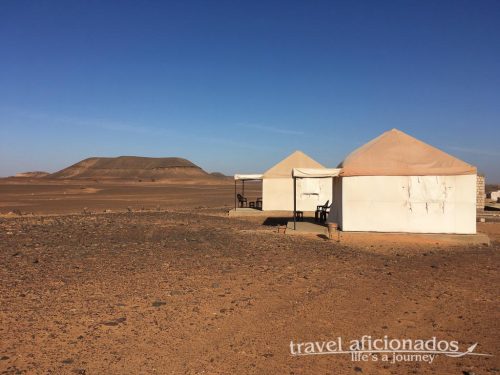
Tented camp nearby the pyramids
Visiting the Pyramids
There are various ways to get to the pyramids from the tented camp: walking, riding in a jeep or on camel. We chose the latter.
When we arrived in the late afternoon we had the whole place to ourselves.
The site is divided into the southern and northern cemetery dating from 8th century BC to the 4th AD. Altogether there are about 100 pyramids, but of many only traces are left. This is why we focused on the northern cluster with about 30 pyramids. Even the highest one is a lot smaller than the ones in Egypt, about 30m high. Unlike Egypt the royal bodies were buried in a tomb dug into the rock, then the pyramid was built on top of it.
Kelly and I were simply at awe, especially when the pyramids and the sand was turning into a deep red with the setting sun. It was one of those unique moments that you want to last forever and at least want to see again. The reason many of the pyramids are destroyed is due to tomb robbers in ancient and modern times, like an Italian treasure hunter Guiseppe Feline who tried his luck here in 1834.
Tourist watching
Just then out of nowhere a group of children appeared, we did not see a village anywhere and guessed that they must have walked quite a distance to marvel at a different attraction- those foreigners watching the sun set.

I strongly recommend staying overnight in Meroe for various reason: since the pyramids are in the middle of the desert there is no better place than gazing at the star lit sky, which we did after dinner. Sunset is the best time to visit when the pyramids and the dunes take on a reddish glow .
If you have your own transport of course you could drive back the four hours to Khartoum the same day or even catch a bus and ride a truck, but I certainly would not haven taken the chance standing on a dark road flagging down transport.
Leaving the Pyramids and heading further north
It was exciting enough next morning, when we tried to get a bus north. They were all full and we ended up hitchhiking. A super nice truck-driver took us to the nearest police check point where a local business man offered us a ride to the bus station in Atbara.

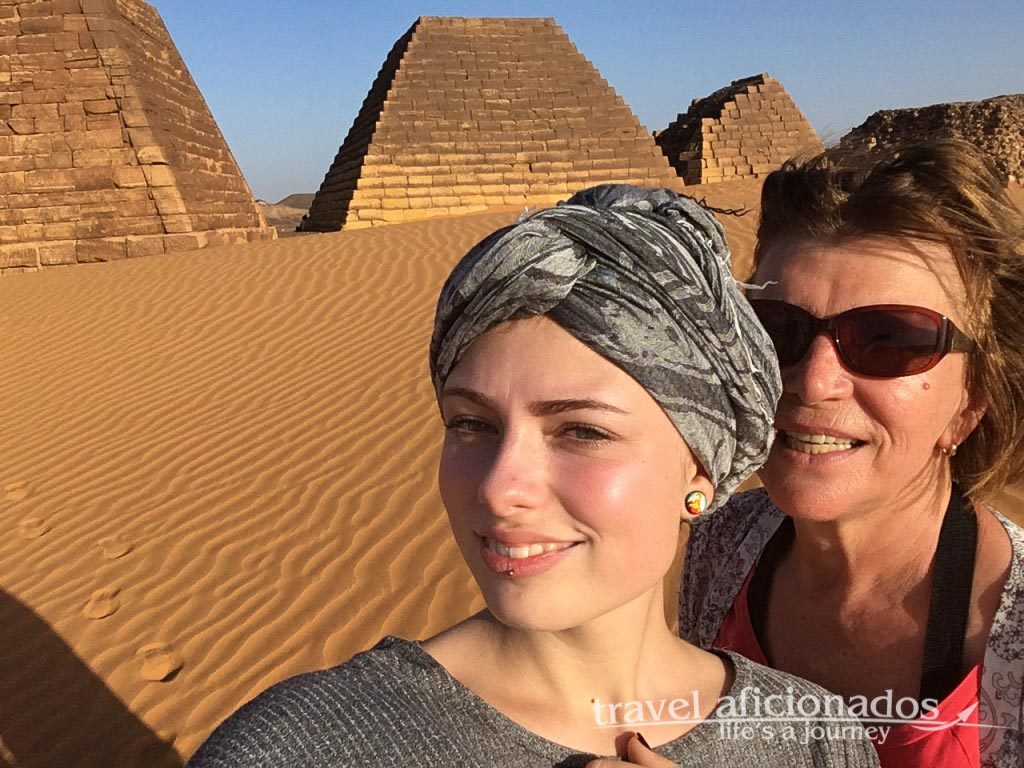
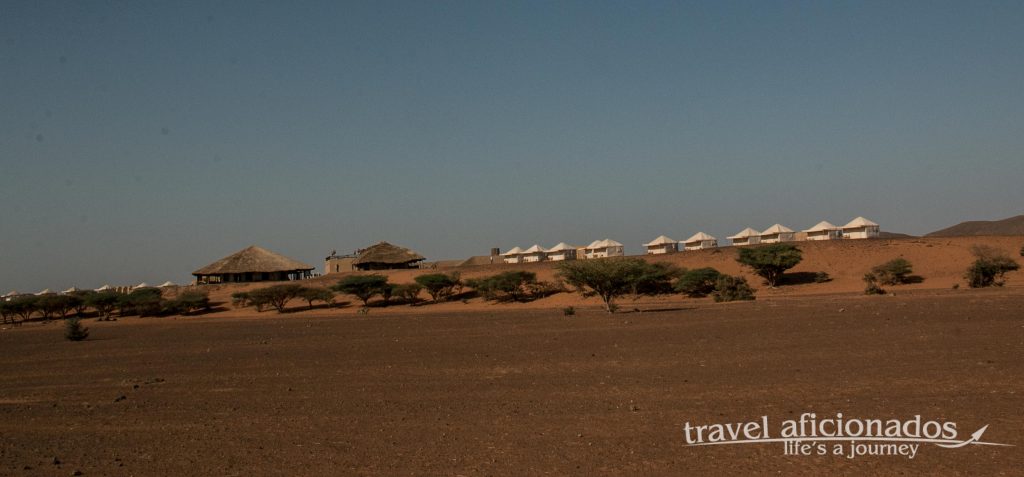
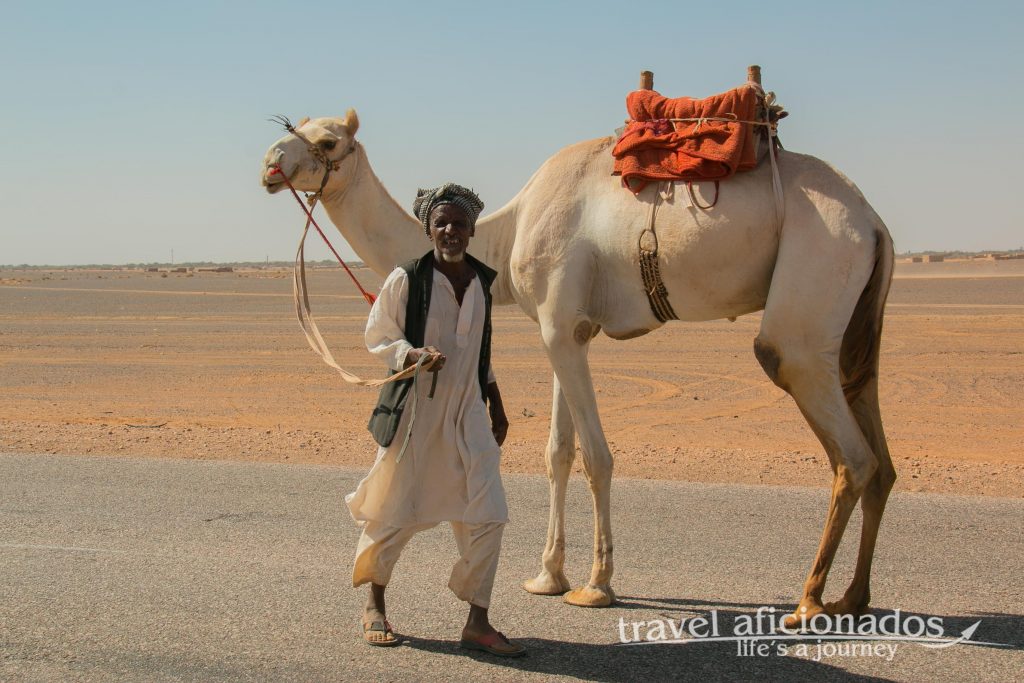
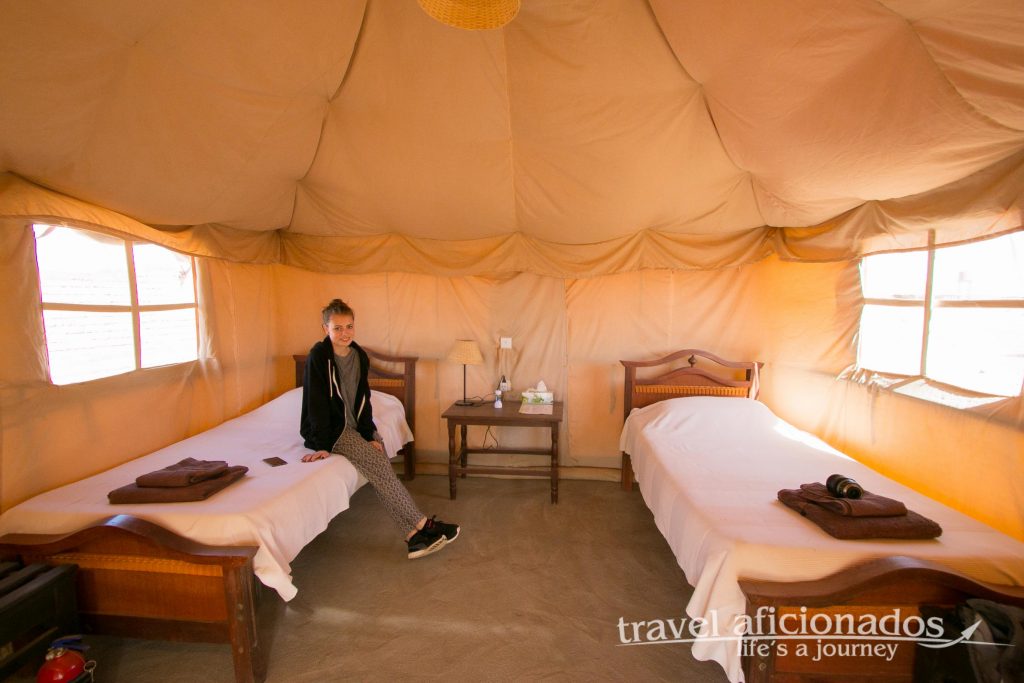
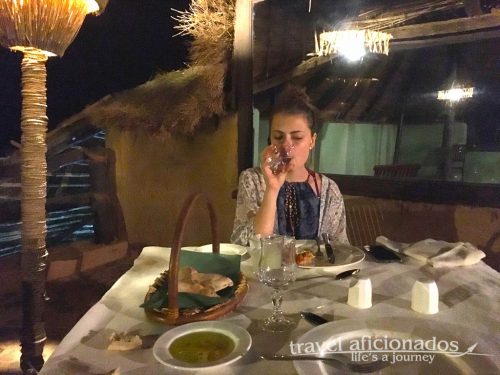
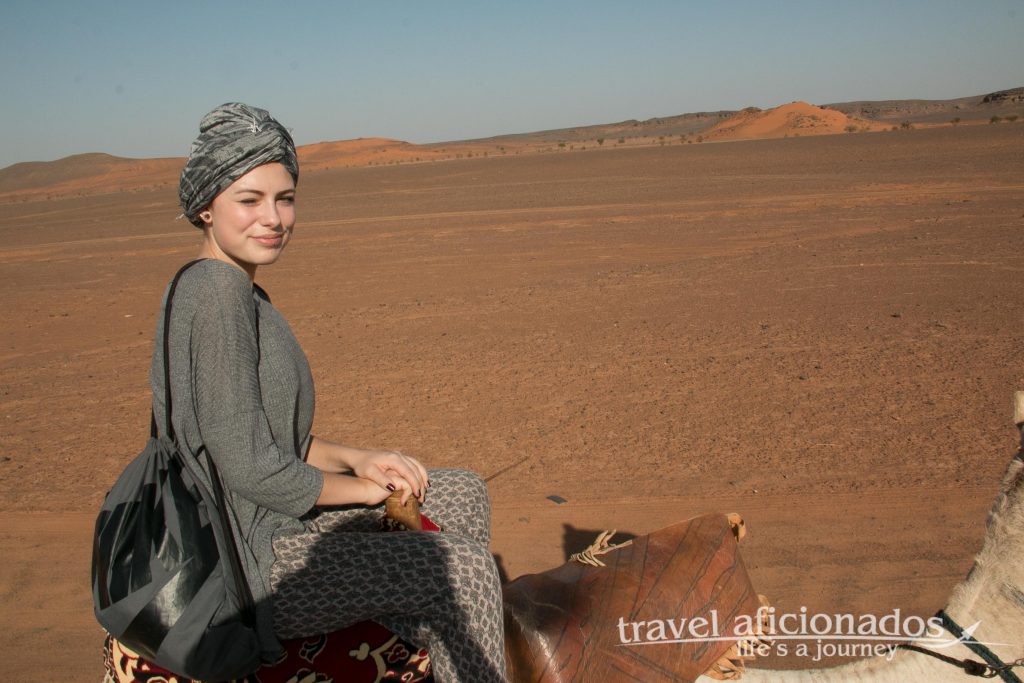
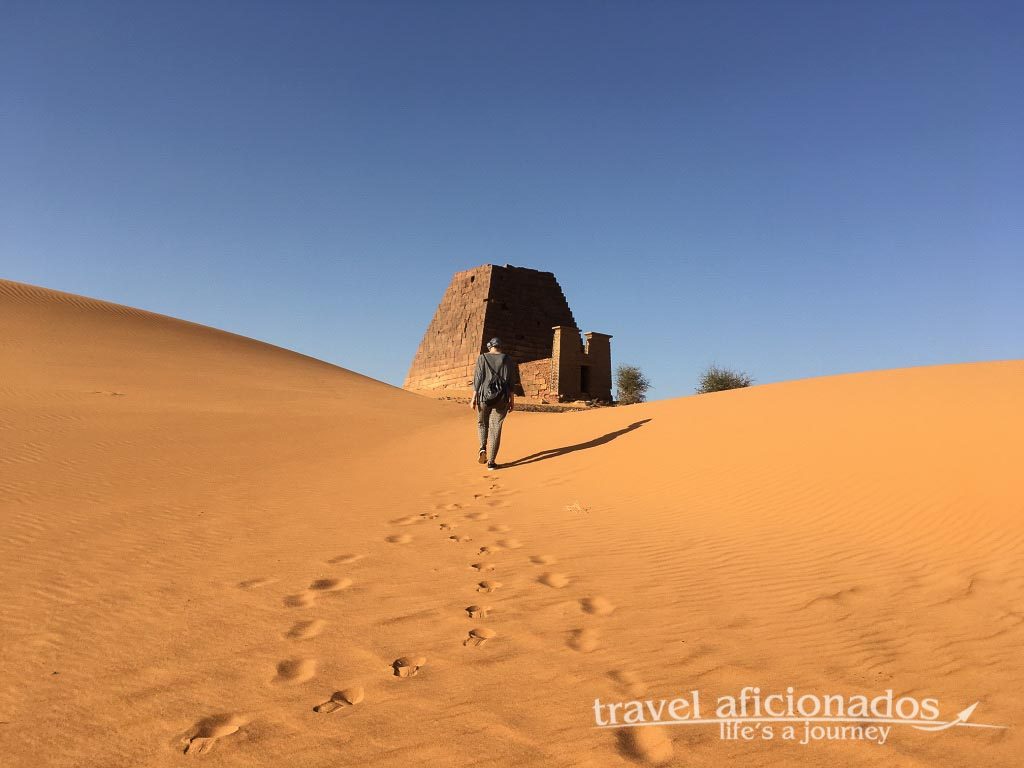
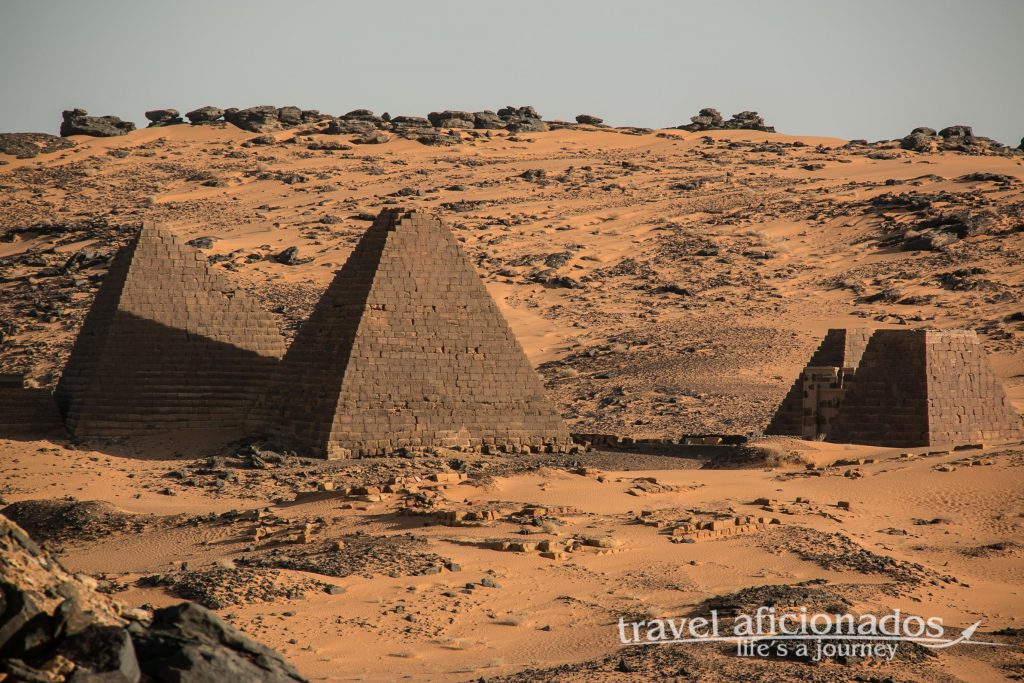
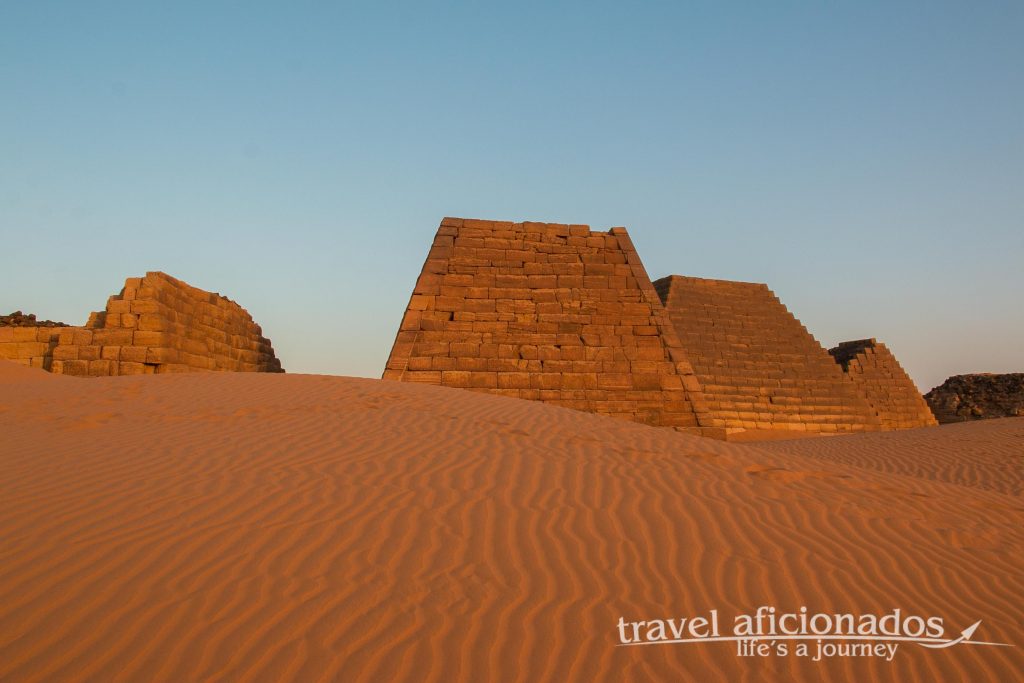
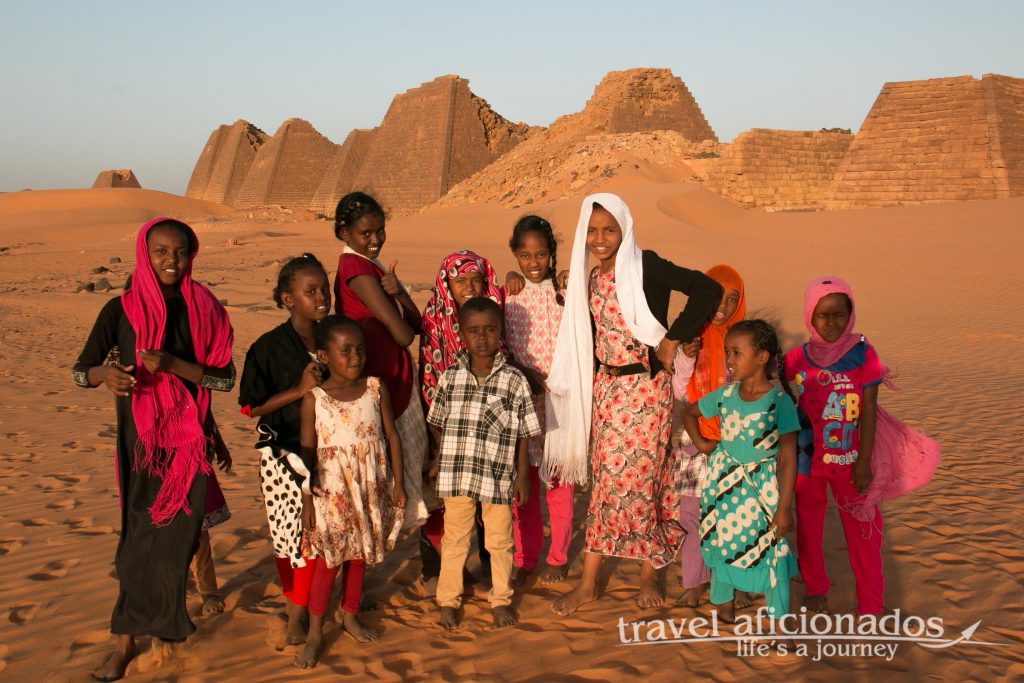
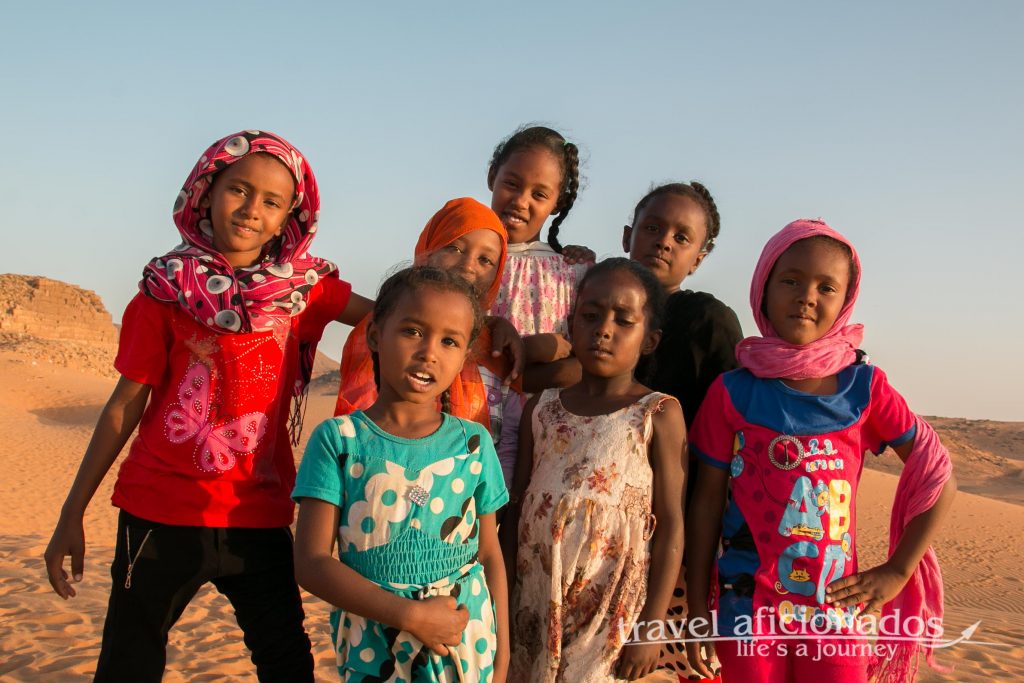
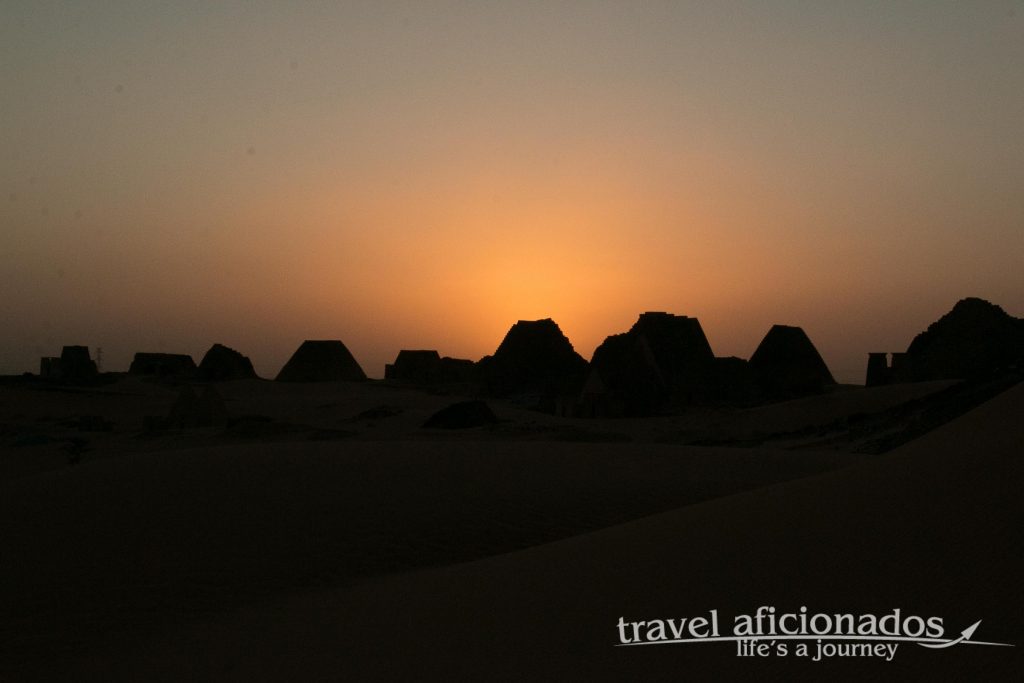
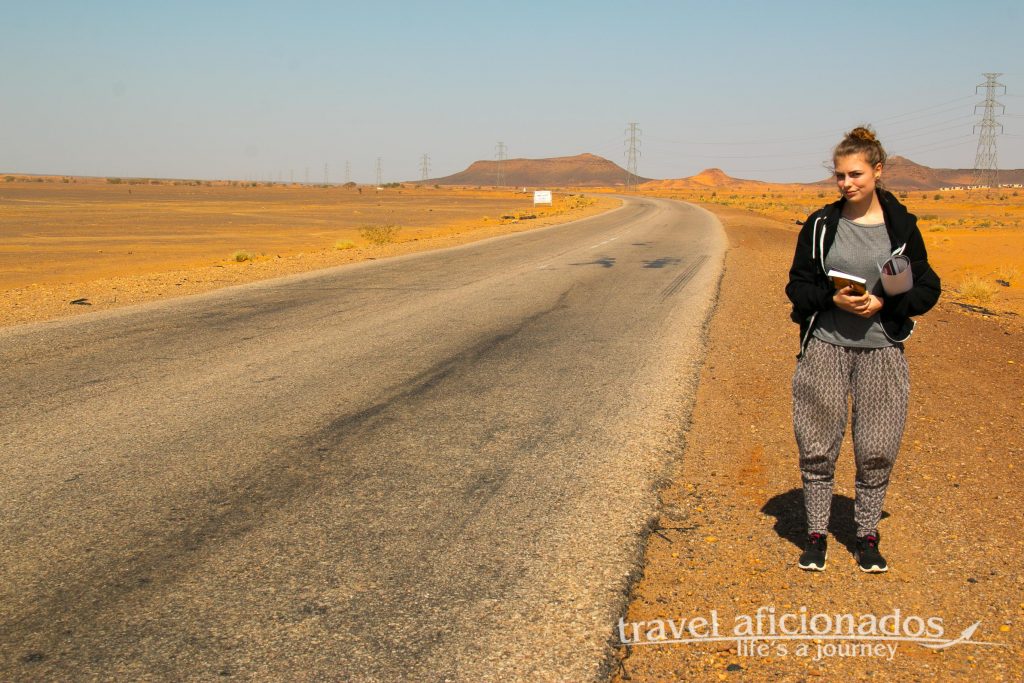
No comments yet.